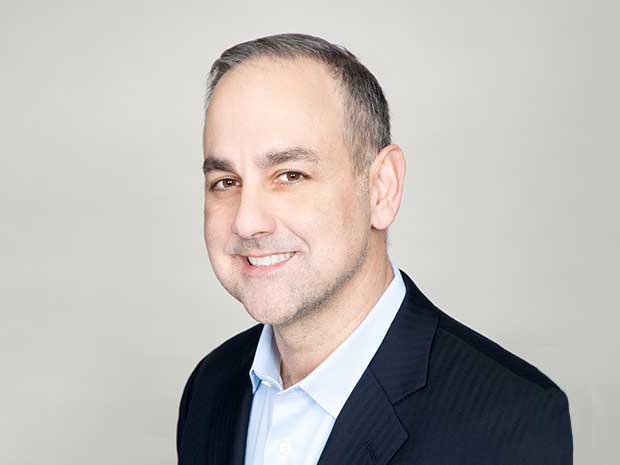GPs are adopting new fund administration models for efficiency.
Key takeaways
Market demands drive changes in fund administration operating models.
Innovative models enhance private equity fund administration.
As private equity firms navigate an increasingly complex and competitive landscape, the evolution of fund administration models has become a strategic imperative. In this timely Q&A—originally published in PEI’s 2025 Fund Services Special Report—RSM’s William Andreoni and Louis Crasto examine how outsourcing, co-sourcing, and insourcing strategies are reshaping the back office. Their insights shed light on how GPs can build resilient, scalable operating models that meet growing investor demands and regulatory pressures while positioning their firms for long-term success.
How are evolving dynamics in the private equity ecosystem driving the adoption of outsourcing and co-sourcing fund administration models, and what strategic benefits do these approaches offer for GPs?
William Andreoni: Global economic shifts and liquidity constraints are driving private equity firms to adopt innovative back-office strategies. Mean- while, the industry is evolving rapidly amid fierce competition, complex regulations and growing investor demands for transparency, liquidity and more. These factors have the potential to affect dealmaking, portfolio performance and exit strategies, all of which results in the imminent need to stabilise your back office and build a scalable model that can weather all conditions in the economy and facilitate meeting changing investor demands and evolving dealmaking strategies.
In addition to these challenges, GPs must also carefully manage mounting operational, financial and regulatory pressures. In light of some of the deal and exit challenges, we are increasingly seeing PE firms leveraging alternative liquidity solutions, such as the secondaries market, NAV financing, portfolio refinancing and strategic M&A.
Additionally, there is growing pressure to execute more back-office innovation and automation, along with a refocusing of fundraising strategies and structures to attract new pools of capital for deployment.
Louis Crasto: Private capital has long adapted to a changing landscape. As a result, GPs have had to evolve and elevate the operating models of their firms to keep up with industry demands and ensure that their model is resilient and fits the needs and preferences of the firm. Each firm’s specific circumstances and plans for growth will influence their decisions around adopting out- sourcing, co-sourcing or insourcing. Additionally, there are cascading considerations to weigh, such as how these fund administration models might affect a GP’s ability to hire people, have a scalable model, meet LP and regulator demands for granular data, and stay lean.
At the core of every target operating model is a sound data strategy, powerful technology with a single source of truth, supported by the right talent, both in-house and from third parties. However, given the dynamics facing multibillion-dollar fund managers, the co-sourcing option is becoming increasingly popular. It allows firms to have full control over their data, leverage technology, integrate with other platforms, and choose which service providers they engage, rather than simply using an administrator’s platform.
Michael Carrillo: Insourcing, co-sourcing and outsourcing form a spectrum, and firms may pivot from one approach to another over time. Firms should be open to diverse fund administration models that incorporate elements of all these approaches while maintaining ongoing dialogue to review arrangements.

There is growing pressure to execute more back-office innovation and automation.
The goal is to establish a resilient and flexible operating model that can withstand current and future challenges. That means guarding against current threats and future-proofing the back office, which is critical to shaping the LP experience. Since LPs are the lifeblood of private equity, a firm’s ability to raise capital, especially in turbulent times, depends in part on back-office optimisation, as operational success is critical to long-term viability.
What role do advanced technologies play in enhancing operational efficiency, compliance and scalability for GPs within an outsourcing model?
MC: Technology is advancing rapidly, requiring GPs’ back-office leaders to become hybrids of accountants and technologists, with the ability to distinguish useful tools from superficial tech. It is essential not only to employ the latest and greatest technologies, but also to ensure that their use cases are solid, and their functionalities are viable in practice. Additionally, protection against cyber threats is crucial when considering controls with third-party service providers and the practical consequences of any breach.
WA: One additional dimension to con- sider is that technology needs to integrate vertically, not just horizontally. We see some firms struggle with the vertical element, and this can create inherent risk and slow down your speed of reporting to critical stakeholders.
When discussing technology stacks, many back-office administrators of- ten focus on how to solve at the fund level only, or even on specific tasks at the fund level. When solving for any functional area, firms need to under- stand how that solution will affect the broader tech stack upstream, down- stream and horizontally across the PE ecosystem.
On that journey to innovate your back office and automate various areas, it is mission-critical to always have cybersecurity top of mind. You must protect firm assets from bad actors. With AI and data automation tools in use and data being transmitted globally, the cybersecurity risk is significant. Private equity firms are increasingly seeking to enhance their operational safety and the security of their data, and ongoing diligence is essential to calibrating these.
Furthermore, advanced technologies enable GPs to build scalable and lean fund administration operating models. GPs want to scale their operations without significant capital expenditure on technology and staffing. The integration of automation and digital tools is essential for managing back-office operations efficiently, allowing GPs to focus on their core investment activities. Overall, advanced technologies are crucial in enhancing operational efficiency, compliance and scalability, enabling GPs to adapt to the evolving private equity landscape.
LC: Advanced technologies are significantly enhancing operational efficiency, and AI tools are being developed to provide investors with vast amounts of real-time data. Managers that ignore this trend risk falling behind.
Which elements should private equity firms prioritise when building a resilient operating model that aligns with the evolving investment landscape?
WA: A solid foundation of any firm starts with the team. Every firm experiences some degree of healthy turnover, which often can serve as a catalyst for exploring the outsourcing versus insourcing question.
The key consideration is this: what kind of talent do you want to attract and retain, both internally and externally? When GPs outsource, they need to recognise that it is not just about the provider’s brand but also about the team members’ brand, their calibre and quality, their level of care and their understanding of the private equity industry.
LC: For a resilient, future-proofed operating model, a firm should consider both technology and data strategy. With numerous types of data flowing in and out of the organisation, what is the plan for building a single source of truth? If that is not established by one platform, it can be achieved by integrating a series of strategic platforms through APIs and other technology. AI will most certainly play a significant role in that too, as operating models continue to advance.
MC: Envisioning a data strategy at the portfolio, fund and management company levels can be extraordinarily complex, making it difficult to build a complete picture. Managers need to leverage an outsourcing provider for some or all this, but a clear data strategy must be at the core.
Amid increasing regulatory and investor scrutiny, how are outsourcing partnerships enabling private equity firms to strengthen their reporting?
LC: Regulatory reporting and investor reporting fall within the same category: leveraging technology to capture granular data in a single source of truth. Outsourcing partnerships can help asset managers strengthen their reporting. Firms that are proactive and stay ahead of new regulations, industry trends and technological advancements will lead the way. AI is already being leveraged by the best firms and is sure to transform what it means to have a target operating model for all firms in the years to come.
Recently, the Institutional Limited Partners Association (ILPA) released new reporting templates, which come into effect in the first quarter of next year. Service providers incorporating these templates into their technology have an opportunity to help private equity firms lead the way in streamlining their reporting.
MC: There is also a commercial aspect to this. Even without mandates, investor expectations continue to drive reporting sophistication. Working with outsourced service providers can pro- vide a competitive advantage.
WA: Outsourcing partnerships pro- vide private equity firms with access to a highly skilled team of advisers who use advanced industry knowledge and innovative technologies to enhance reporting capabilities. By outsourcing key operational functions, firms can ensure that their reporting processes are aligned with best practices and regulatory standards, thereby mitigating risks and enhancing investor confidence.
How is the relationship between GPs and service providers expected to evolve over the next decade, and what factors will define successful partnerships in this new era?
MC: Historically, the notion was that certain services within the private equity ecosystem could be viewed as commodities, leading some within the industry to believe that simply going with the cheapest provider would check the necessary boxes. Where this notion has prevailed, many firms have encountered all too real issues with quality, some of which have carried their own, some- times costly, consequences. There must be real trust between a GP and a service provider to achieve operational alpha.
Business is fundamentally about people. The most successful relationships between private equity firms and out- sourced service providers occur where there is plenty of collaboration between the in-house and outsourced teams.
WA: The back office plays a crucial role in shaping the LP experience. The last thing any firm wants to see is in- correct information sent to investors, regulators or other stakeholders, which clearly creates very real problems. Fundamentally, the effectiveness of the back office strongly influences how satisfied those stakeholders are with the firm, so it is essential to get this right.
As the old saying goes, “a smooth sea never made a skilled sailor”. We are entering a period of market volatility, and firms must ensure what they have built is adaptable to these conditions to maintain back-office agility and strength. In this ever-changing industry, it is crucial to understand your LP needs and your team needs.
The relationship between GPs and service providers is expected to evolve towards greater integration and strategic alignment. Factors such as trust, collaboration and the adoption of advanced technologies will be critical in defining successful partnerships.
Click here to download PEI’s 2025 Fund Services report, “A closer look: How LPs are stepping up back-office scrutiny.” The full magazine includes this interview with RSM leaders, William Andreoni, Louis Crasto, and Michael Carrillo


